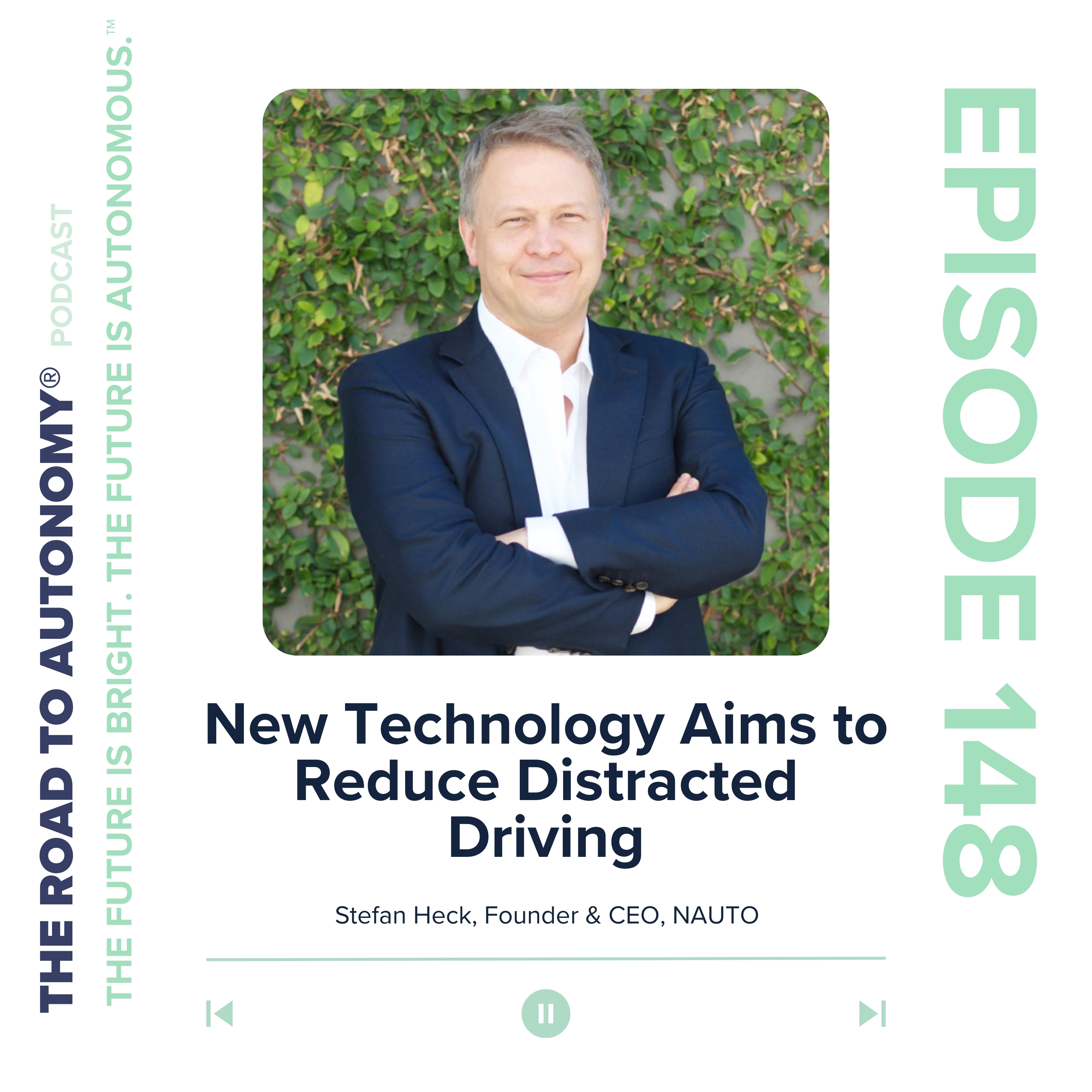
Episode 148 | New Technology Aims to Reduce Distracted Driving
 2023-07-18
2023-07-18
Stefan Heck, Founder & CEO, NAUTO joined Grayson Brulte on The Road to Autonomy podcast to discuss how NAUTO’s predictive-AI software is helping to reduce distracted driving.
The conversation begins with Stefan discussing what he saw in the market when he founded the company in 2015 and what he learned from collision data.
There is nothing as dangerous as distracted driving. – Stefan Heck
According to NAUTO’s propriety data, on average, a commercial driver is distracted 7 times per driving hour, equating to roughly every 9 minutes. To help mitigate the distracted driving risk and reduce potential crashes, the NAUTO system monitors drivers behaviors and offers audio cues to gain the drivers attention.
With-in the first week of using NAUTO, about 80% of all the distractions and nearly 100% of the severe long distractions are eliminated. – Stefan Heck
The system acts as a virtual coach that keeps drivers engaged while driving, giving them feedback in real-time on their driving behavior. The feedback comes in the form of a virtual coach that inspires change. When a driver realizes that their behavior as dangerous, they are more likely to change that behavior. In the data NAUTO has seen 80% to 90% of the drivers drop their risk behavior based on feedback from the virtual coach.
This virtual coach, predictive-AI system is able to identify potential dangerous scenarios because it has been trained on 3 billion miles with over 200,000 high-risk driving events.
The accuracy of all of these interventions is really important. There’s nothing as upsetting as telling you, hey there is a bicycle here and there is no bicycle. Or you are tailgating and there is nobody in front of you. So, we spent years making sure that all of detectors, all of our interventions are super accurate. – Stefan Heck
If the system is not accurate, drivers will begin to distrust the system and figure out a way to turn it off. This behavior is common amongst individuals who own vehicles with lane-keep assist. They simply turn it off because it’s inaccurate and annoying.
A system that is accurate is a system that works and does it job to help avoid dangers driving scenarios. NAUTO’s system caught the attention of Stellantis, as the company invested with a plan to offer the system in their commercial fleet vehicles.
At first the system will use the NAUTO hardware and in the future, the software system will run natively on the vehicles by leveraging the on-board sensors without the NAUTO hardware. In addition to Stellantis, NAUTO has a partnership with Brightdrop where fleets can order can order the system pre-installed directly from the factory today.
As robo-taxis scale around the world, the NAUTO system could be used for occupant detection and safety routing applications. As autonomy grows, NAUTO’s market grows.
Wrapping up the conversation, Stefan shares his opinion on the future of AI as it relates to mobility.
Recorded on Wednesday, July 5, 2023
--------
About The Road to Autonomy
The Road to Autonomy® is a leading source of data, insight and commentary on autonomous vehicles/trucks and the emerging autonomy economy™. The company has two businesses: The Road to Autonomy Indices, with Standard and Poor’s Dow Jones Indices as the custom calculation agent; Media, which includes The Road to Autonomy and Autonomy Economy podcasts as well as This Week in The Autonomy Economy newsletter.
See Privacy Policy at https://art19.com/privacy and California Privacy Notice at https://art19.com/privacy#do-not-sell-my-info.
More Episodes
Create your
podcast in
minutes
- Full-featured podcast site
- Unlimited storage and bandwidth
- Comprehensive podcast stats
- Distribute to Apple Podcasts, Spotify, and more
- Make money with your podcast
It is Free
- Privacy Policy
- Cookie Policy
- Terms of Use
- Consent Preferences
- Copyright © 2015-2024 Podbean.com






